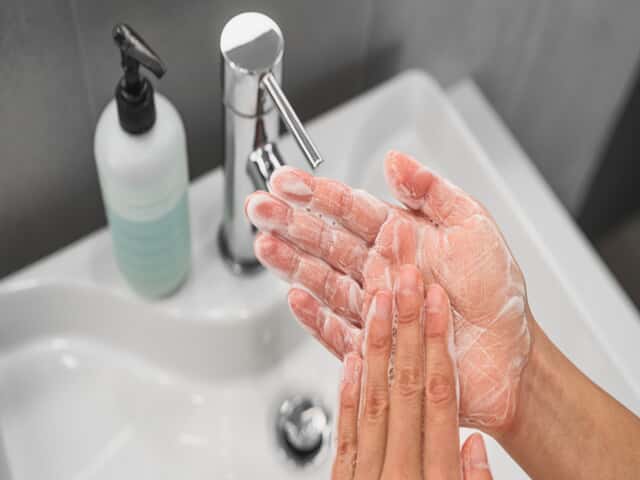Germ-fighting Tips For National Handwashing Awareness Week
- Category: Did You Know?
- Posted On:

You wash your hands multiple times a day, but are you doing it the proper way?
December 6-12 is recognized as National Handwashing Awareness Week. The Centers for Disease Control (CDC) describes handwashing as “one of the most effective ways to prevent the spread of germs”. Especially important in the age of the COVID-19 pandemic, handwashing can stop germs from spreading between people.
The CDC suggests these five steps:
- Wet your hands with clean, running water (warm or cold), turn off the tap, and apply soap.
- Lather your hands by rubbing them together with the soap. Lather the backs of your hands, between your fingers, and under your nails.
- Scrub your hands for at least 20 seconds. Need a timer? Hum the “Happy Birthday” song from beginning to end twice.
- Rinse your hands well under clean, running water.
- Dry your hands using a clean towel or air dry them.
Learn more about the science behind these recommendations here.
By washing your hands the correct way and often, you can keep yourself and those around you healthy. This is especially true during these key times where germs are most likely to be obtained and spread:
- Before, during, and after preparing food.
- Before and after eating food.
- Before and after caring for someone at home who is sick with vomiting or diarrhea.
- Before and after treating a cut or wound.
- After using the toilet.
- After changing diapers or cleaning up a child who has used the toilet.
- After blowing your nose, coughing or sneezing.
- After touching an animal, animal feed, or animal waste.
- After handling pet food or pet treats.
- After touching garbage.
The use of hand sanitizers has become increasingly popular in 2020, but is it as effective as using soap and water? The CDC reports hand sanitizers can quickly reduce the number of germs on your hands, but experts also say:
- Sanitizers do not get rid of all types of germs.
- Hand sanitizers may not be as effective when hands are visibly dirty or greasy.
- Hand sanitizers might not remove harmful chemicals from hands like pesticides and heavy metals.
How to properly use hand sanitizer:
- Apply the gel product to the palm of one hand (read the label to learn the correct amount).
- Rub your hands together.
- Rub the gel over all the surfaces of your hands and fingers until your hands are dry. This should take around 20 seconds.
Find more information on using hand sanitizers here.
In the age of the COVID-19 pandemic, you should wash your hands with soap and water for at least 20 seconds or use a hand sanitizer with at least 60 percent alcohol before and after:
- Touching your eyes, nose, or mouth.
- Touching your mask.
- Entering and leaving a public place.
- Touching an item or surface that may be frequently touched by other people, such as door handles, tables, gas pumps, shopping carts, or electronic cashier registers/screens.
Remember that swallowing alcohol-based hand sanitizers can cause alcohol poisoning if multiple mouthfuls are swallowed. Please keep it out of reach of children and supervise their use. If your child does swallow hand sanitizer, contact your local poison control center or call the national hotline: 800-222-1222. Visit poison.org for more information.
Additional Resources:


